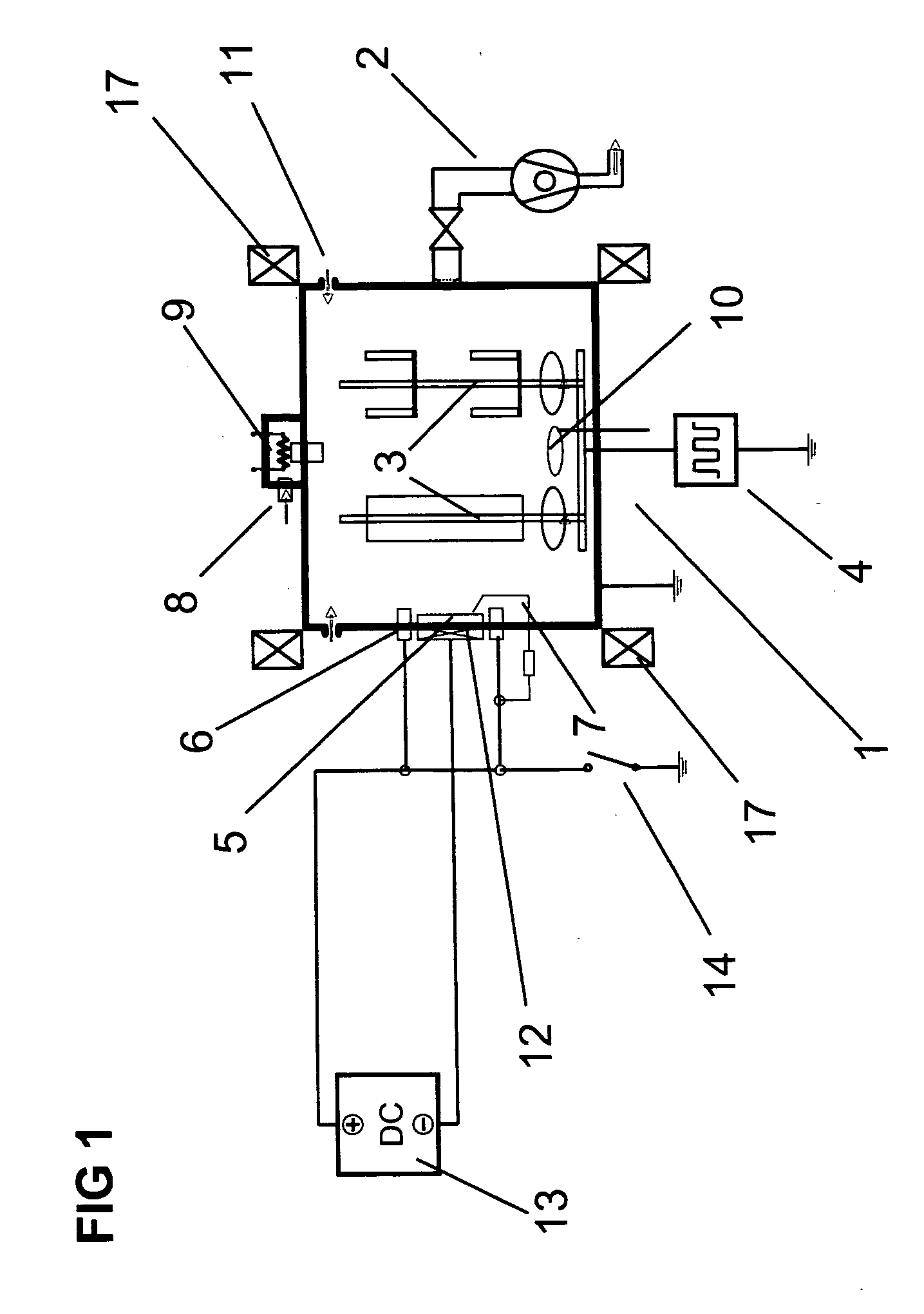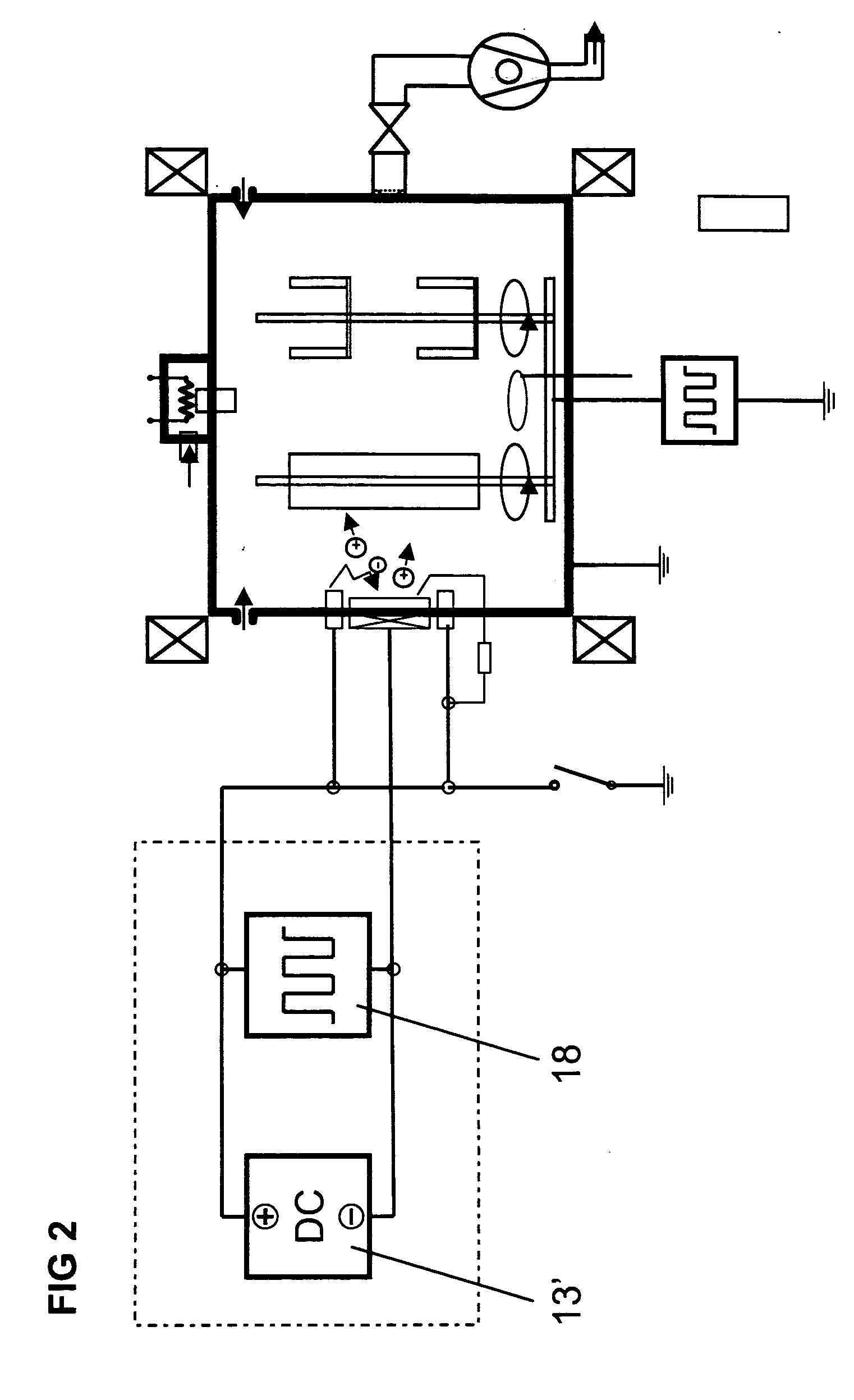Method for operating a pulsed arc source
a pulsed arc and source technology, applied in the direction of electrodes, diaphragms, ion implantation coatings, etc., can solve the problems of cathode, high production cost, and high cost of operation,
- Summary
- Abstract
- Description
- Claims
- Application Information
AI Technical Summary
Benefits of technology
Problems solved by technology
Method used
Image
Examples
example # 1
EXAMPLE #1
[0051] After placing the work pieces in the appropriate double- or triple-rotatable holders and the holders in the vacuum processing system, the processing chamber was pumped down to a pressure of about 10−4.
[0052] For setting the process temperature a low-voltage arc (LVA) plasma, aided by radiation heaters, was ignited between a cathode chamber with a hot cathode, separated by a baffle, and the anodic work pieces in an argon-hydrogen atmosphere.
[0053] The heating parameters were selected as follows:
Discharge current, LVA150 AArgon flow50 ccm / sHydrogen flow300 ccm / sProcess pressure1.4 × 10−2 mbarSubstrate temperatureapprox. 500° C.Process duration45 min.
[0054] Those skilled in the art are familiar with alternative parameters. The substrates were preferably used as anodes for the low-voltage arc and also preferably pulsed in a unipolar or bipolar mode.
[0055] As the next procedural step the etching was started. To that end the low-voltage arc was operated between the f...
PUM
| Property | Measurement | Unit |
|---|---|---|
| current | aaaaa | aaaaa |
| current | aaaaa | aaaaa |
| current | aaaaa | aaaaa |
Abstract
Description
Claims
Application Information
 Login to View More
Login to View More - R&D
- Intellectual Property
- Life Sciences
- Materials
- Tech Scout
- Unparalleled Data Quality
- Higher Quality Content
- 60% Fewer Hallucinations
Browse by: Latest US Patents, China's latest patents, Technical Efficacy Thesaurus, Application Domain, Technology Topic, Popular Technical Reports.
© 2025 PatSnap. All rights reserved.Legal|Privacy policy|Modern Slavery Act Transparency Statement|Sitemap|About US| Contact US: help@patsnap.com



